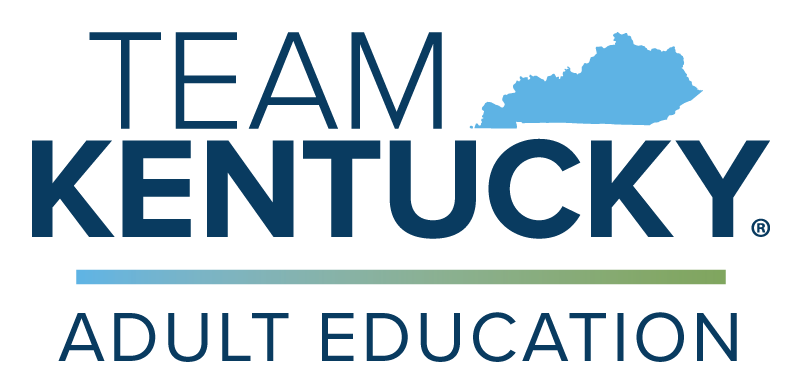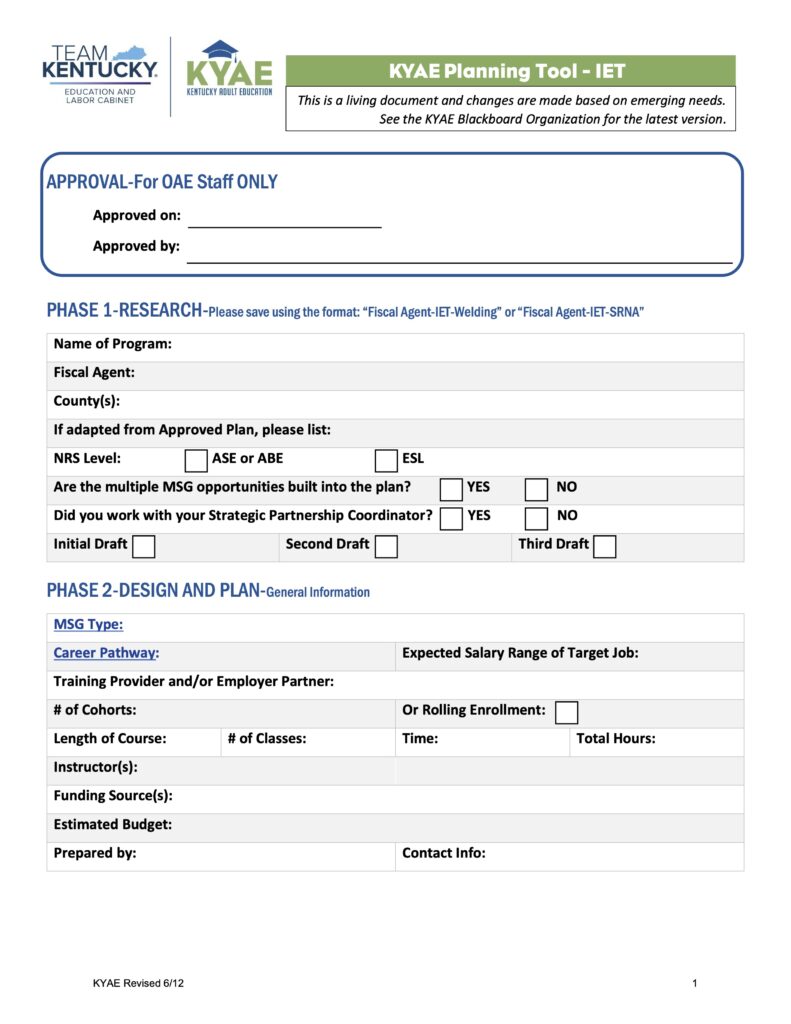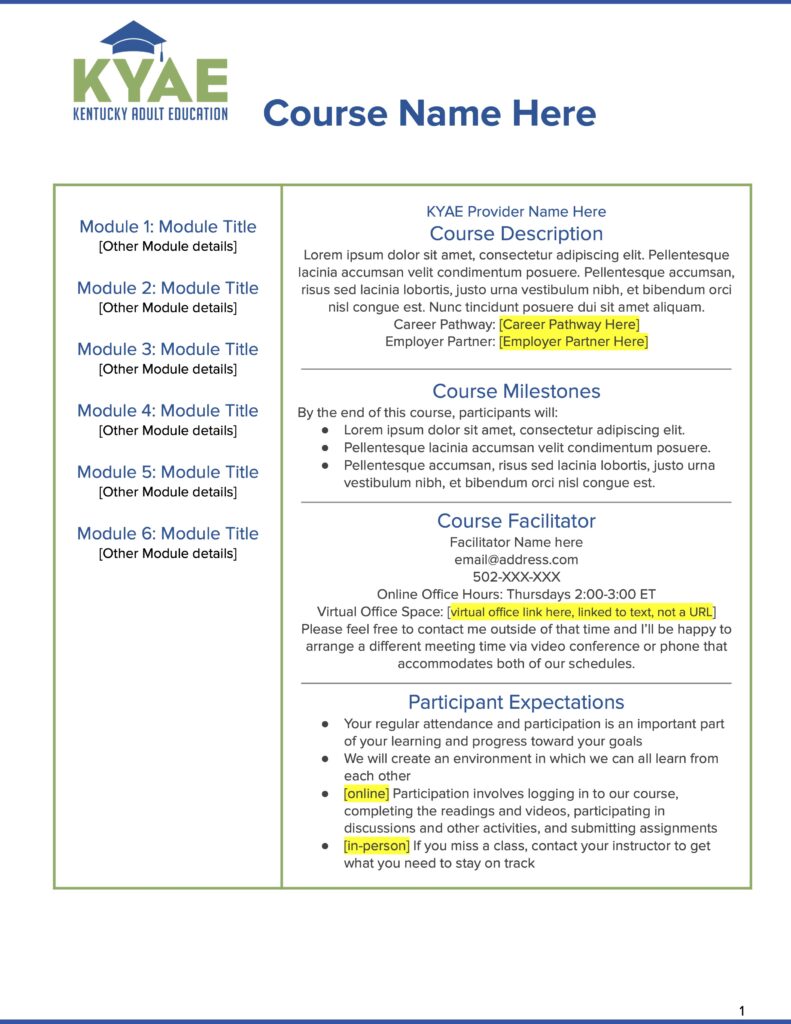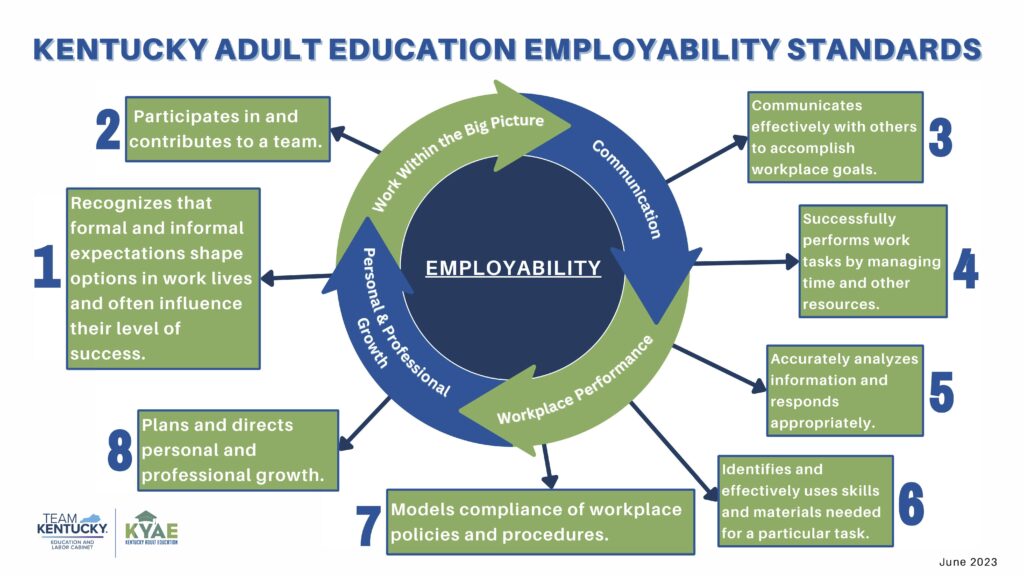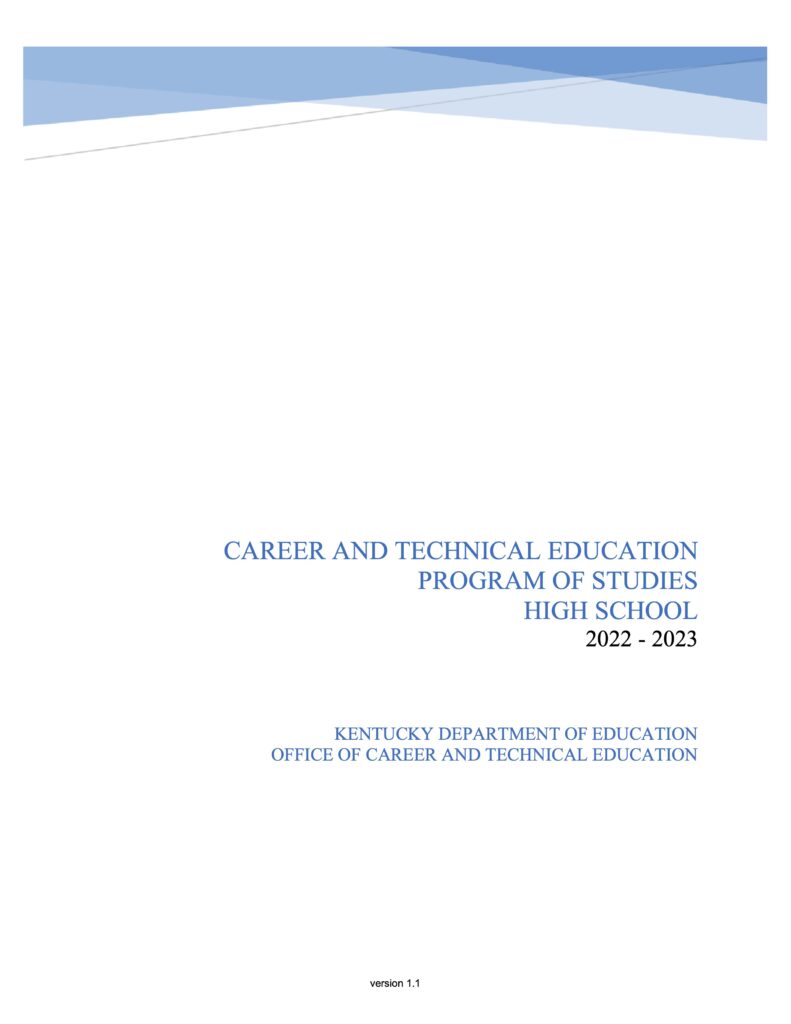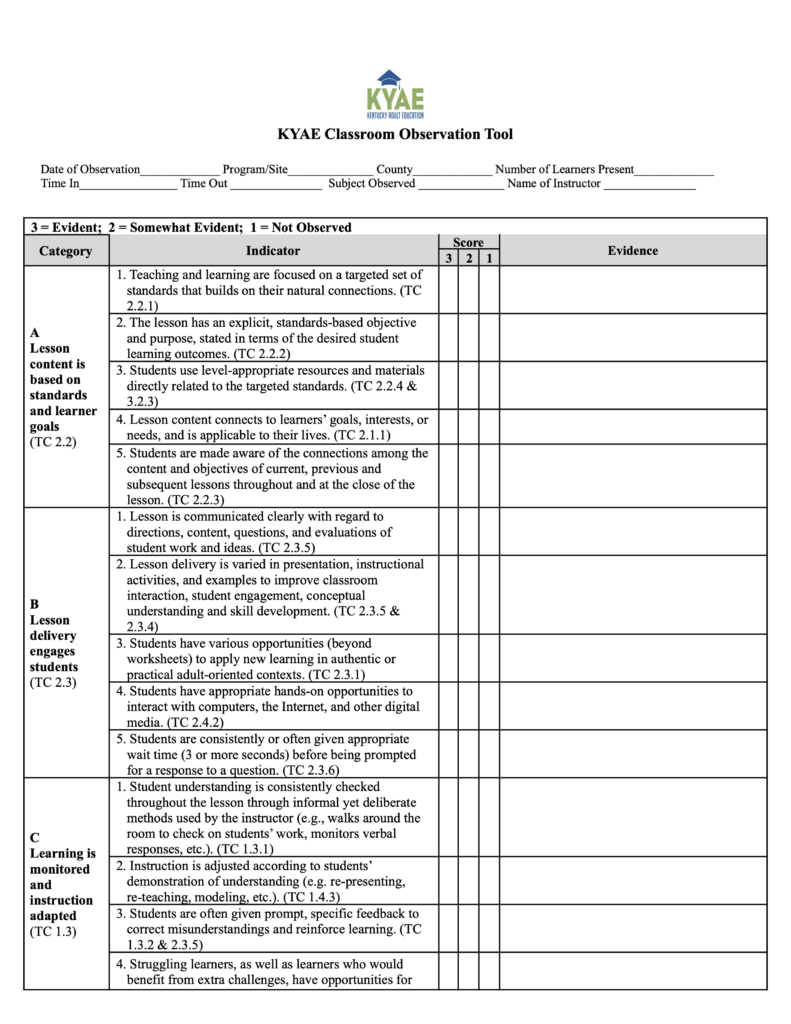From crosswalks to curated content, these instructional resource collections will help you to take your instruction to the next level.
Streamlined Lesson Plan Template
IET & WPL Resources
The first place to look when using the IET & WPL planning tool to design an IET is to see what your peers have already been approved. Find the full set of KYAE IET/WPL resources here. Look and adapt at will!
Don’t get caught without a plan! Use these syllabus templates to lay out your plan, so that you and your students are on the same page.
Generating an IET? Working on your contextualization? Have a look at the KYAE Employability standards so that you can plan your lessons and programs to up skill your students workplace readiness.
Put the E(ducation) in your IET with the KDE Career and Technical Education Program of Studies. This document is a rich resource for developing standards based technical education.
The Spring 2022 Education Summit was all about building new IET and WPL programs. From the slide decks to the FAQs, the content from that meeting is available here, to answer your questions and inspire your projects.
KYAE Classroom Observation Tool
The KYAE Classroom Observation Tool is more than an observation tool. Train new teachers on lesson planning best practices. Hit the highlights and dive into the nitty gritties. Plan the classes that are going to have the highest impact on improving your students’ lives.
Math
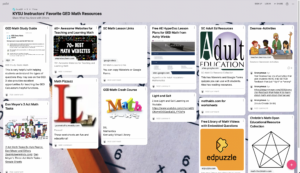
Begun during the Workshop Wednesday session GED® Concepts: Scope and Sequence for Math (January 27, 2021), this Padlet curates KYAE instructors’ favorite math resources. Feel free to add to the Padlet if you do not see your favorite resource.
KEDC created Math Vocabulary Lists

KEDC has kindly assembled this useful list of math vocabulary items:
• Level 1 math vocab list
• Level 2 math vocab list
• Level 3 math vocab list
• Level 4 math vocab list
• Level 5 math vocab list
• Level 6 math vocab list
Instructor Master Glossary of Math Terms

Crosswalks align CCRS Standards, TABE Blueprints, GED® Performance Level Descriptors, and new TABE Skill Descriptions from student diagnostic reports.

Created by Marysusan Houk and Jeff MacDanald for the PL course Introduction to Assessment for Adult Basic Education (Math for TABE 11/12) in FY2019, the study guide is available as a PDF and a Word doc for easy editing. Both versions have answers. The product includes a PowerPoint describing the document, the rationale for focusing on level M, and their reflections on the effectiveness of the study guide.
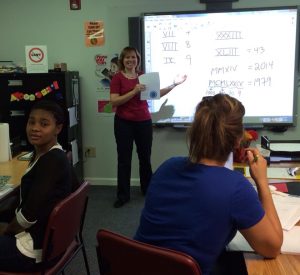
Pace Learning System’s Test Translation Table shows connections between TABE test items, their TABE domain and skill descriptors, and CCR standards and sub-skills tested by TABE. This resource is intended to increase understanding of the competencies measured by each TABE test form, level, and test item. Analyses are currently available for TABE 11 levels E, M, and D. Content is restricted to site members, but users can create free member accounts.
KYAE Math Google Classroom

Exclusively for Kentucky Adult Educators, the math Google Classroom provides downloadable lessons and unit plans aligned to GED® High Impact Indicators. Classroom codes are located in PLC Google Classrooms, from Jo (jbotts@moreheadstate.edu).
RLA

Crosswalks align CCRS Standards, TABE Blueprints, GED® Performance Level Descriptors, and new TABE Skill Descriptions from student diagnostic reports.

Pace Learning System’s Test Translation Table shows connections between TABE test items, their TABE domain and skill descriptors, and CCR standards and sub-skills tested by TABE. This resource is intended to increase understanding of the competencies measured by each TABE test form, level, and test item. Analyses are currently available for TABE 11 levels E, M, and D. Content is restricted to site members, but users can create free member accounts.
KYAE RLA Google Classroom

Exclusively for Kentucky Adult Educators, RLA Google Classrooms provide downloadable lessons by skills for levels E and M as well as educator resources for instructional strategies. Classroom codes are located in PLC Classes, from Jo (jbotts@moreheadstate.edu).
ESL
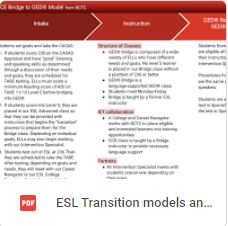
The work of the 2019-2020 ESL PLC focused not only on CASAS and BE training but also on how best to transition our Kentucky ESL students to GED® seekers. The best practices reflect suggested transitions in IELCE programs (contributed by BCTC) and GED® contextualized instruction for non-IELCE programs (contributed by West Kentucky CTC). Both infographic models are accompanied by a FAQ document with contact information for questions. These highlighted models are not meant to be a rulebook to follow; rather, they should be guiding considerations to tailor to local needs and resources.

Jon Reynolds, ESL instructor in Kenton County, created a playlist of video tutorials to teach instructors how to use the BE app on their phones. Teachers will need to make sure they have usernames and passwords for their students to effectively utilize the instructional capabilities at home.
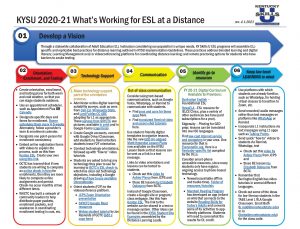
Covid 19 propelled changes in how we reach our ESL students. The 2020-2021 ESL PLC gathered best practices from across Kentucky and borrowed other great ideas from around the country to compile into this one-stop shop infographic for reaching ESL students at a distance in Kentucky.
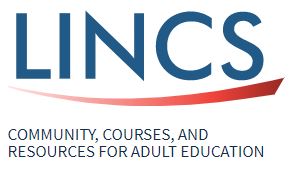
Programs participating in the IELCE initiative (Integrated English Literacy and Civics Education) can access programmatic resources collected by LINCS. The Literacy Information and Communication System (LINCS) is a national leadership initiative of the U.S. Department of Education, Office of Career, Technical, and Adult Education (OCTAE) to expand evidence-based practice in the field of adult education. Follow this link for additional IELCE Resources.
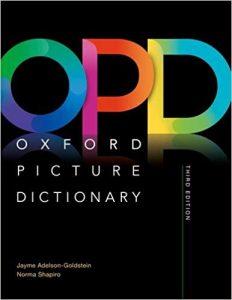
KYAE conducted professional learning with Jayme Adelson-Goldstein in December 2011. Links to the videos of those sessions can be found on the hyperlinked page. Thank you to Jon Reynolds for making these recordings available.
This accumulation of webinars covers grammar instruction, project-based learning, vocabulary, etc.; ranges from 1 to 3 hours; and is produced by a variety of vendors/sources.
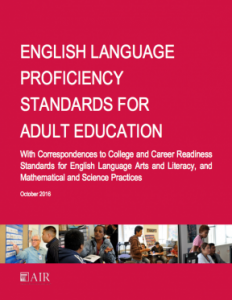
These ELP standards from American Institutes for Research are intended for use with adult English Language Learners (ELLs) in the adult education setting. They correspond to the CCR Standards for English Language Arts and Literacy, and mathematical and science practices, and should be used as the basis to help ELLs acquire the language knowledge and skills necessary to achieve their postsecondary and career goals.

Cambridge University Press facilitates a blog for teachers of English to people whose first language is not English. World of Better Learning is the general home page for all categories of blogs. From the home page, choose a category from the pull-down menu; categories include Insights, Techniques, and Tools.
One subsection of World of Better Learning includes a grammar blog covering a variety of grammar issues for ESL students. Many of the posts contain downloadable worksheets and additional resources.
You can create a free account to receive a monthly newsletter containing teaching tips and classroom activities that are included in the Grammar Teaching Tips and Activities blob.
GED®
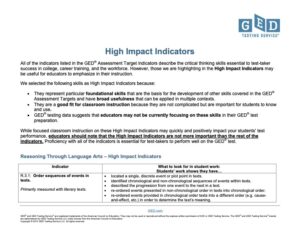
GED® High Impact Indicators (HII) represent foundational skills that have a broad usefulness across contexts and content. While instruction in HII may quickly impact student test performance, they are NOT more important that the rest of the indicators.

This GED® Testing Service document shows the relationship between the High Impact Indicators and other content indicators assessed on the GED® test. Adult educators can use this resource to create instructional plans addressing multiple skills in a concentrated time.
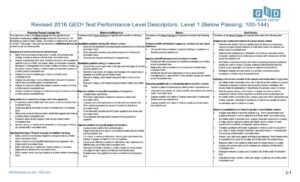
Performance Level Descriptors explain the skills a student demonstrates in each performance level on the GED® test and the GED Ready® practice test. The four performance levels are Below Passing (1), Passing for High School Equivalency (2), GED® College Ready (3), and GED® College Ready + Credit (4).
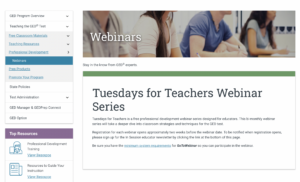
Tuesdays for Teachers is a free professional development webinar series designed for educators. This bi-monthly webinar series will take a deeper dive into classroom strategies and techniques for the GED test. Registration for each webinar opens approximately two weeks before the webinar date.

Recent GED® graduate Alice gives you an overview of what to expect on the GED® Reasoning Through Language Arts Extended Response Test. Watch this 8-episode series with your students to take a deeper dive into the skills and expectations that will help students excel on their written responses.
Corrections

As part of the professional learning process, instructors create streamlined lesson plans related to the focus of their specific PL electives. This page contains those streamlined lesson plans for Effective Instruction in a Corrections Setting (FY2019).
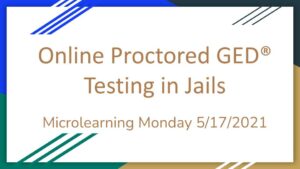
This session, co-facilitated by GEDTS, OAE, and local provider network staff, provides insights into the challenges of and strategies for Online Proctored GED® (OP GED®) testing in jails. The slide deck can be found here.

This professional learning elective, co-facilitated by Susan Pittman, Kathryn Gagel, and KY DOC staff, provides an orientation to KY DOC programs, processes and incentives. The session also features an explanation of distinctions between KYAE and KY DOC services; foundational reading and math instructional strategies; best practices from the field; and foundational training on integrating edtech into Corrections using Brainchild Study Buddies. Find all resources, including slide deck, in the course instructional resource folder.
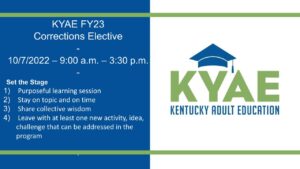
This professional learning elective, facilitated by Susan Pittman, featured contextualized Corrections mathematics instructional strategies. In the course resource folder, you can find the slide deck, and the course resource guide, among other resources.
The Corrections Student Tracking Form was developed by the FY22 Statewide Corrections PLC to assist local providers in tracking student progress and resource types used/associated with student performance.
This Corrections Student Tracking Spreadsheet was developed by Somerset Community College Corrections Instructor, George Rodgers. It was developed to help Corrections Instructors keep track of various student metrics specific to Corrections instructional settings. Find the key to the spreadsheet codes and abbreviations here.
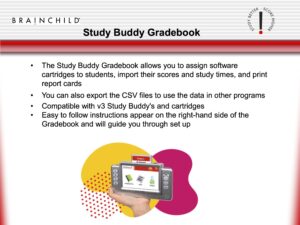
Brainchild Study Buddies are one of few Corrections-approved edtech options. KYAE providers have reported success with using Brainchild’s gamified approach to GED® prep in a variety of Corrections settings. This folder contains several resources related to Study Buddy curricula and use.
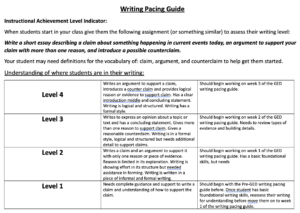
This Federal Bureau of Prisons Writing Pacing Guide, designed by Susan Pittman, contains pre-GED® and GED® writing instructional resources. It also provides an overview of the types of writing students should complete at various NRS Levels.
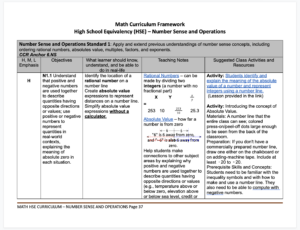
This Federal Bureau of Prisons HSE RLA and Math Curriculum Framework was inspired by the KYAE Instructional Framework Series. It contains standard-aligned, Corrections-approved instructional resources including objectives, teaching notes, and links to suggested class activities.

As part of his participation in the KYAE/KY DOC Statewide Corrections PLC, Charles Kahn of KY DOC’s Northpoint Training Center, shared an array of PPT-based instructional resources. This collection includes instructional strategies and activities for math, reading, grammar, and social studies.
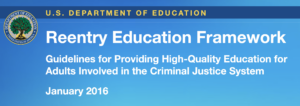
The LINCS Reentry Education Framework Report presents an approach for reentry education providers to develop an education continuum that strengthens their services and bridges the gap between facility- and community-based services.
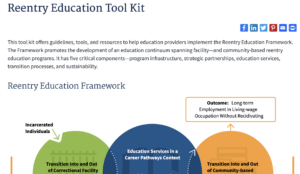
This tool kit offers guidelines, tools, and resources to help education providers implement the Reentry Education Framework.
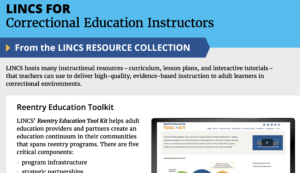
This flyer highlights resources of interest to Corrections and reentry education instructors and stakeholders.
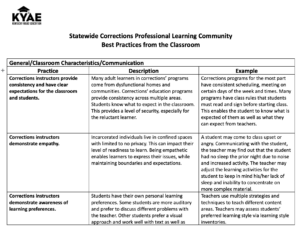
This document contains a collection of Corrections instructional best practices shared by KYAE and KY DOC participants in the FY23 Statewide Corrections PLC during their first formal meeting of the year.
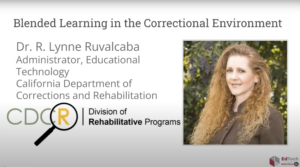
This YouTube recorded webinar from World Education features Dr. R. Lynne Ruvalcaba from the California Department of Corrections and Rehabilitation and explores why to use technology in the context of Corrections, what some challenges to using tech in that space are, and how CDCR actually implements blended learning.
Kentucky Education Television
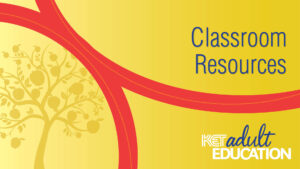
The topics found in this collection include instructional resources designed specifically for the adult education field.
Resources in this collection include videos, printable handouts, and self-paced lessons. Learners can study math, reading, and critical thinking skills, and find materials to help them prepare for their high school equivalency tests.
